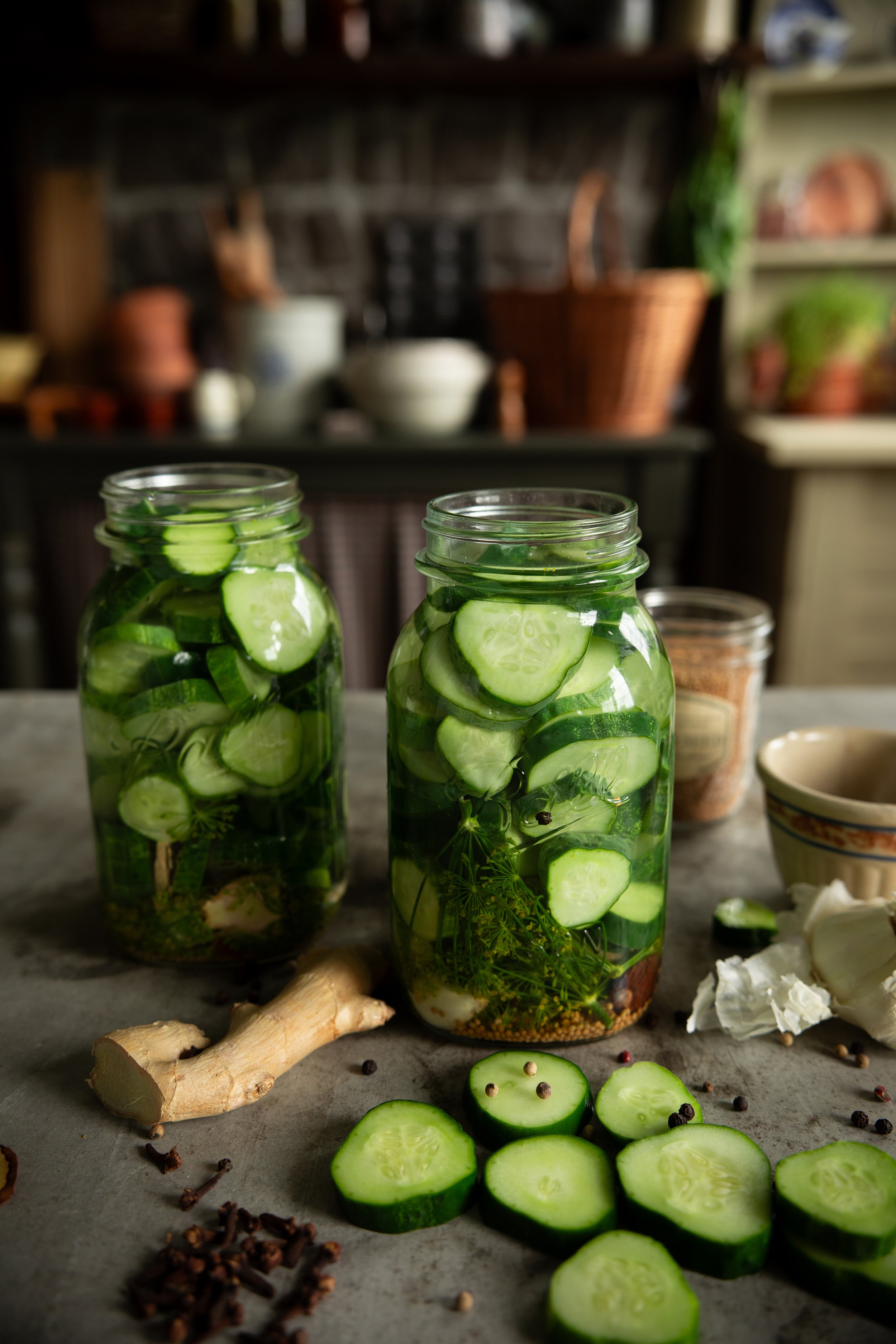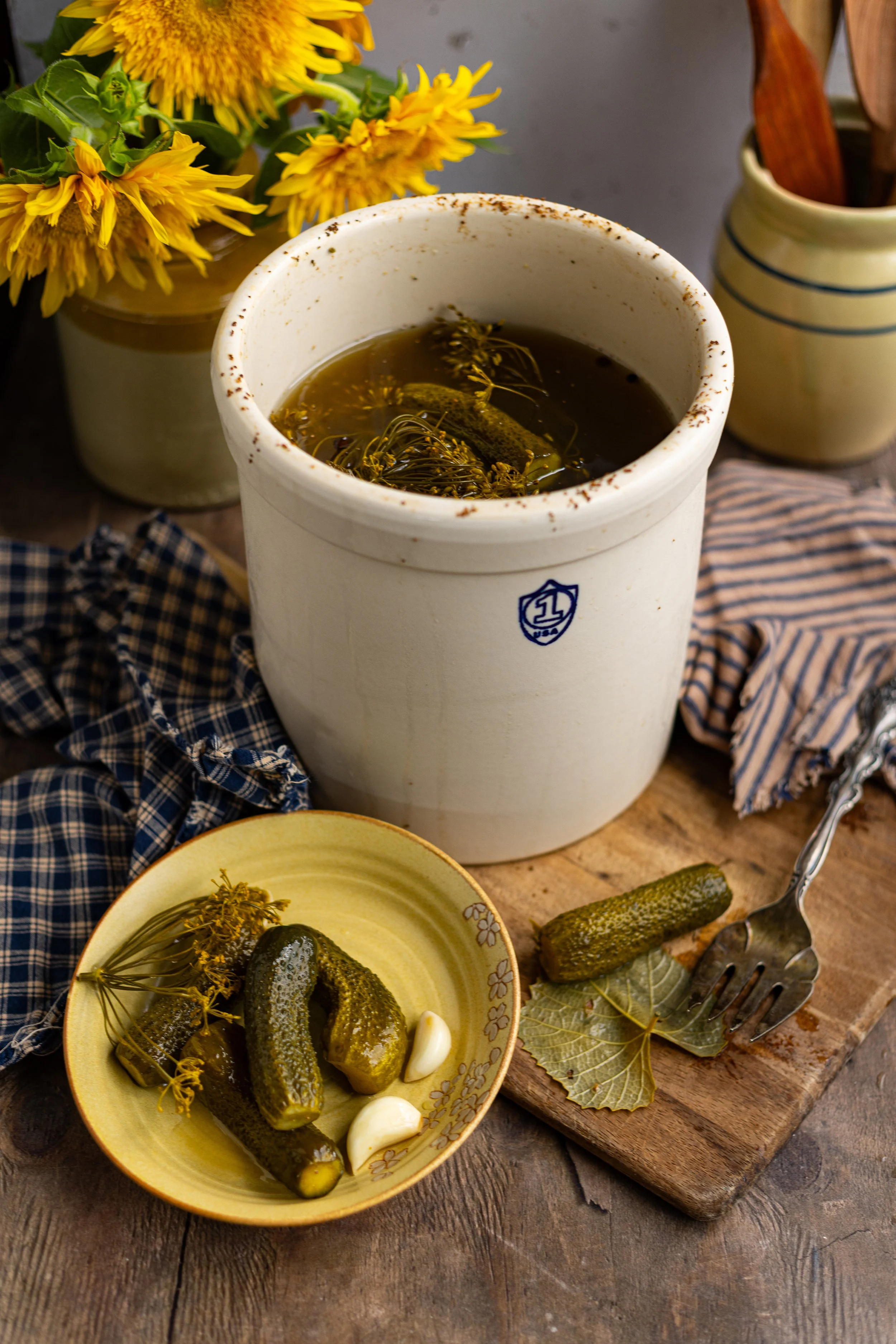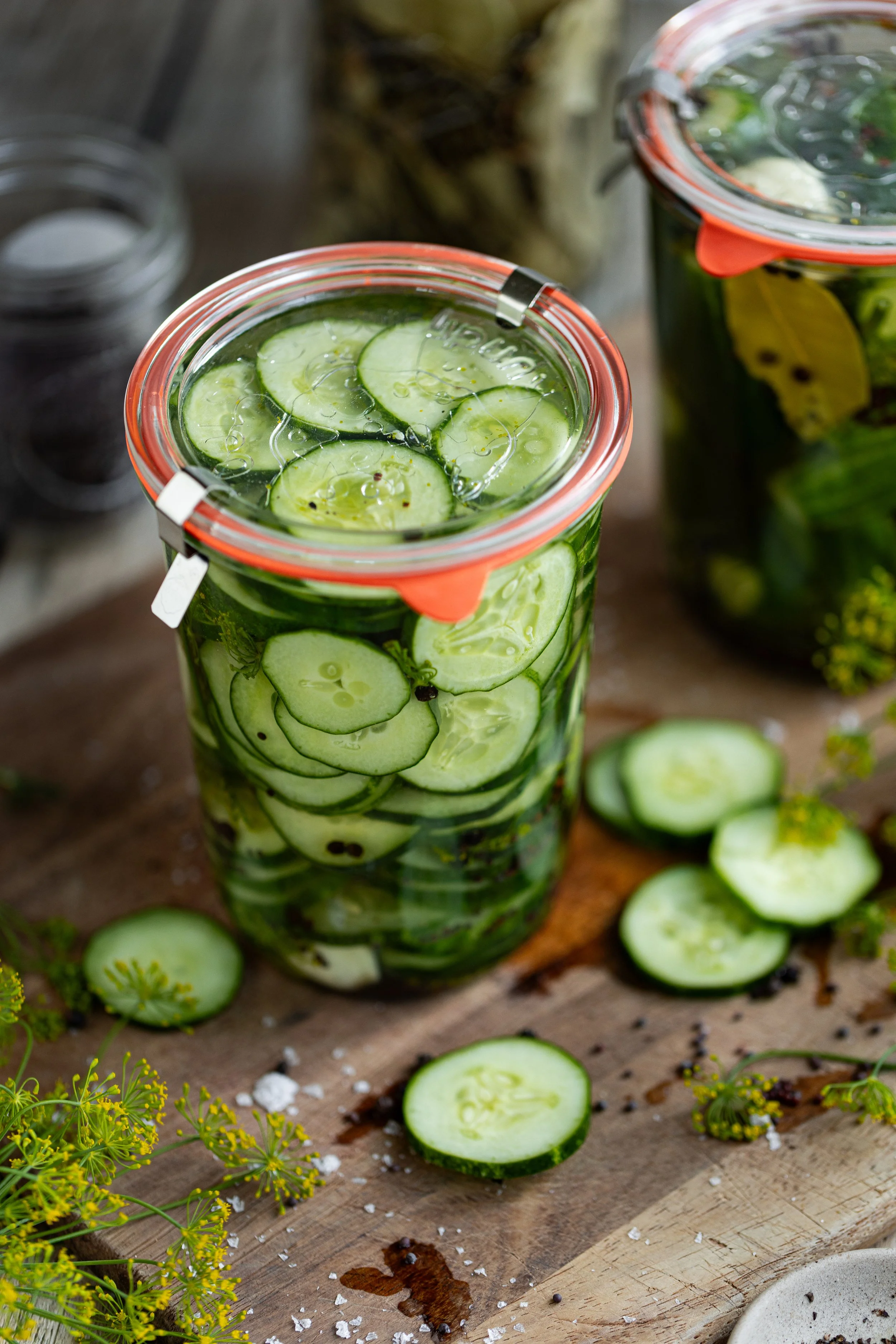Video: 18th Century Style Refrigerator Pickles
This post may contain affiliate links, please see our privacy policy for more information.
Hello and happiest of Mondays to you! I am excited to share that I have a new YouTube video to share with you. This week we are making 18th century inspired pickles. However, instead of pickling them as they would have in the late 1700s, we will be simply taking the flavors from that era and pickling these cucumbers in the refrigerator. One day, I would love to attempt canning with an animal bladder… but today, we are going to keep things a bit more modern!
In this recipe, the spices nutmeg, mace, ginger, cloves, and white peppercorns create a truly unique blend.
the original receipt:
I wanted to capture the flavors of the past with this recipe. I think I managed to accomplish that! The original recipe comes from American Cookery by Amelia Simmons, which was the first American cookbook published in 1796. Did you notice that it was written by a woman? I just think that is spectacular!
Here is the original recipe from which I flavored this version of pickles:
To pickle Cucumbers.
Let your cucumbers be fmall, frefh gathered, and free from fpots; then make a pickle of falt and water, ftrong enough to bear an egg; boil the pickle and fkim it well, and then pour it upon your cucumbers, and ftive them down for twenty four hours; then ftrain them out into a cullender, and dry them well with a cloth, and take the beft white wine vinegar, with cloves, fliced mac, nutmeg, white peppercorns, long pepper, and races of ginger, (as much as you pleafe) boil them up together, and then clap the cucumbers in, with a few vine leaves, and a little falt, and as foon as they begin to turn their colour, put them into jars, ftive them down clofe, and when cold, tie on a bladder and leather.
What you do think? Sounds interesting, right? One day, I would love to try making them exactly as written! For now… we take away some of those 18th century pickling flavors.
tips for pickling cucumbers:
Soak Pickles in an Ice Bath. This is best done for several hours, but at the least 1 hour is good enough. You can let these soak on the counter and continually add new ice or leave them floating in the fridge. This keep the cucumbers cold and crisp before pickling. I like to keep them in the ice water and cut them as I can them so that they remain cold as long as possible!
24 Hours Vine to Brine. When it comes to making super crisp and crunchy pickles, the fresher the better. This can be difficult if you do not grow cucumbers yourself! There is an old saying that goes, “24 hours from vine to brine” and that really rings true here. Cucumbers should really pickled the same day that they are picked, if possible. Because cucumbers are mostly made up of water, they begin to lose their firmness as soon as they are off the vine. If you cannot get to them that quickly, then make sure to give the ice bath trick a try. I also like to use older cucumbers for bread and butter pickles since they don’t necessarily need to be super crunchy!
Cut Off Blossom Ends. The blossom end of the cucumber, or the narrower end if you did not pick them yourself, can make the pickle go limp in the brine. It’s best to cut this off. If you are unsure which end is the blossom end, then just trim off both ends about 1/8-inch.
Add Grape Leaves. Grape leaves and oak leaves have tannins that help keep the cucumbers firm in the brine. Adding a couple of grape leaves to your jar will naturally improve the crispness of your pickles and give it a really good crunch! This is typically done when fermenting pickles in water.
Use Ball® Pickle Crisp. I love this stuff! It’s simply calcium chloride that helps to improve the quality and crunch of your pickles. I prefer using this over a pickling lime, which is generally not recommended for modern pickling anymore as it has the potential to be dangerous.
Pickling in the 18th century:
Pickling has been around since 2400 BC, with the earliest historically found pickling techniques coming from Mesopotamia. The first pickles were actually cucumbers, or so I read, and cucumbers are native to northern India.
Pickling in the 18th century expanded to all sorts of different vegetables, fruits, and even eggs. Vinegar is always present, as the acid preserved the food for long periods of time. It was very common to make sauerkraut during this time period, as the fermented cabbage was a cure for scruvy.
To cover the pickles, the glazed crock would be sealed with leather, clarified butter, or a pig’s bladder. I have actually seen this done in person in Jamestown, VA. It’s fascinating! The bladder is heated and then stretched over the top of the crock, and as it cools, it shrinks and seals the jar closed. Then it dries out completely.
I hope that you enjoyed this video and short history lesson about making pickles! Again, while this recipe is not a true 18th century pickling method, I had a lot of fun trying the flavors of the past.
The combination of ginger, cloves, nutmeg, white peppercorns, and dill are truly unique. I have not tasted a pickle like this ever before!
If you would like to see more video from us, please be sure to subscribe to our YouTube channel!
xoxo Kayla
18th Century Style Refrigerator Pickles

Ingredients
- 3 lbs (1.4 kg) pickling cucumbers, cut any style
- 2 1/2 cups (600 ml) water
- 2 cups (480 ml) distilled white vinegar
- 1/4 cup (146 g) pickling salt
- 1/4 cup (100 g) granulated sugar
- 4 cloves garlic, peeled
- 2 tsp mustard seed
- 4 bay leaves
- 8 dill flower heads
- 2 whole nutmeg
- 1 tsp mixed peppercorns, primarily white
- 12 whole cloves
- 1 knob ginger, cut into 1/4-inch slices
- 1/2 tsp Ball® Pickle Crisp
Instructions
- Clean and sanitize jars, lids, and rings. If canning, prepare your hot water bath canner.
- Wash and trim both ends off the cucumbers, about 1/8-inch. Place the cucumbers in an ice water bath and place in the refrigerator for at least 1 hour. I personally think 3 hours is best! Slice the cucumbers any way that you prefer for pickling, such as leaving them whole, slicing thickly or thinly, spears, etc.
- In a large saucepan, combine the water, vinegar, pickling salt, and sugar. Whisk until the salt and sugar are dissolved. Bring to a boil and turn off heat, if pickling in the refrigerator. If you are canning the pickles, keep the brine at a simmer.
- Fill each clean jar with 2 garlic cloves, 1/2 tsp mustard seed, 1 bay leaf, 2 dill flower heads, a whole nutmeg, 1/4 tsp mixed peppercorns, 3 cloves, 2 slices of ginger, and 1/8 tsp Ball® pickle crisp. Double this amount if using quart jars. Fill the jars with the prepared cucumbers leaving 1/2-inch headspace. Cover the cucumbers with the brine to 1/2-inch headspace, removing air bubbles, and adjust headspace as necessary. Apply lids and rings to fingertip tight.
- If you are refrigerating, place the pickles into the refrigerator and store for about 3 months. Check pickles daily for flavoring. Peak flavor is usually about 1-2 weeks after making the pickles, and then they get softer as time goes on.
- If you are canning these pickles, you should fill each jar individually to make sure the jars remain hot. Once all jars are filled, process the jars in the canner for 15 minutes. Remove the canner lid and let the jars stand in the canner for 5 minutes before removing. Check seals after 12-24 hours. Store in a dark space for up to 18 months.













